What does pms mean in medical terms. Understanding Premenstrual Syndrome (PMS): Symptoms, Causes, and Treatment Options
What is premenstrual syndrome and how does it affect women. What are the common symptoms of PMS. How is PMS diagnosed and treated. What is the difference between PMS and PMDD. How can lifestyle changes help manage PMS symptoms.
Defining Premenstrual Syndrome (PMS)
Premenstrual syndrome, commonly known as PMS, is a collection of physical and emotional symptoms that occur in the days leading up to a woman’s menstrual period. These symptoms typically begin one to two weeks before menstruation and subside once the period starts. While most women experience some degree of PMS, the severity and combination of symptoms can vary greatly from person to person.
PMS affects millions of women worldwide, with estimates suggesting that up to 75% of menstruating women experience some form of premenstrual symptoms. For some, these symptoms are mild and manageable, while for others, they can significantly impact daily life and activities.

Key Characteristics of PMS
- Cyclical pattern: Symptoms occur in a predictable pattern related to the menstrual cycle
- Timing: Symptoms typically begin 5-11 days before menstruation
- Duration: Symptoms usually resolve within 4 days after the onset of menstruation
- Variability: The type and severity of symptoms can differ from person to person and even from cycle to cycle
Common Symptoms of Premenstrual Syndrome
PMS symptoms can be broadly categorized into physical and emotional symptoms. It’s important to note that not all women will experience all symptoms, and the severity can vary. Some women may predominantly experience physical symptoms, while others may be more affected by emotional changes.
Physical Symptoms of PMS
- Breast tenderness and swelling
- Bloating and water retention
- Headaches or migraines
- Fatigue and changes in sleep patterns
- Acne flare-ups
- Joint or muscle pain
- Gastrointestinal issues (constipation or diarrhea)
- Food cravings, especially for sweet or salty foods
- Weight gain
Emotional and Behavioral Symptoms of PMS
- Mood swings
- Irritability or anger
- Anxiety or tension
- Depression or feelings of sadness
- Difficulty concentrating
- Changes in libido
- Social withdrawal
- Insomnia or hypersomnia
- Decreased interest in usual activities
The severity of these symptoms can range from mild discomfort to significant disruption of daily activities. For most women, PMS symptoms are manageable with lifestyle changes and over-the-counter remedies. However, for some, the symptoms can be severe enough to warrant medical intervention.

Distinguishing PMS from PMDD
While PMS is a common condition affecting many women, a more severe form known as Premenstrual Dysphoric Disorder (PMDD) affects a smaller percentage of the female population. PMDD is characterized by more intense emotional and behavioral symptoms that significantly impact daily functioning.
Key Differences Between PMS and PMDD
- Severity: PMDD symptoms are more severe and debilitating than those of PMS
- Prevalence: PMDD affects approximately 3-8% of women, while PMS is much more common
- Impact: PMDD symptoms significantly interfere with work, school, social activities, and relationships
- Diagnosis: PMDD is recognized as a distinct disorder in the Diagnostic and Statistical Manual of Mental Disorders (DSM-5)
Women with PMDD may experience severe depression, anxiety, or irritability that affects their ability to function normally. These symptoms are often accompanied by physical symptoms similar to those of PMS but to a more extreme degree.
Causes and Risk Factors of PMS
The exact cause of PMS remains unclear, but researchers believe it’s related to the hormonal fluctuations that occur during the menstrual cycle. Several factors may contribute to the development and severity of PMS symptoms:

Hormonal Changes
The cyclical changes in estrogen and progesterone levels are thought to play a significant role in PMS. These hormones can affect neurotransmitters in the brain, such as serotonin, which influences mood, sleep, and appetite.
Chemical Changes in the Brain
Fluctuations in serotonin levels may contribute to PMS symptoms, particularly mood-related issues. Low levels of serotonin have been associated with depression, fatigue, sleep problems, and food cravings.
Genetic Factors
There appears to be a genetic component to PMS, as the condition tends to run in families. Women whose close female relatives experience PMS are more likely to develop the condition themselves.
Lifestyle Factors
Certain lifestyle habits may exacerbate PMS symptoms. These include:
- Poor diet high in salt, sugar, or caffeine
- Lack of exercise
- High stress levels
- Smoking
- Alcohol consumption
Risk Factors for PMS
While PMS can affect any menstruating woman, certain factors may increase the likelihood or severity of symptoms:

- Age: Women in their late 20s to early 40s tend to experience more severe PMS symptoms
- Childbirth history: Some studies suggest that women who have given birth may be more likely to experience PMS
- Mental health conditions: A history of depression or anxiety may increase the risk of PMS or PMDD
- Chronic medical conditions: Conditions such as asthma, allergies, or migraines may worsen during PMS
Diagnosing Premenstrual Syndrome
Diagnosing PMS can be challenging as there is no single test to confirm the condition. Instead, healthcare providers rely on a combination of symptom tracking, medical history, and physical examination to make a diagnosis.
Diagnostic Criteria for PMS
For a diagnosis of PMS, symptoms must:
- Occur consistently in the luteal phase of the menstrual cycle (5-11 days before menstruation)
- Resolve within a few days of the onset of menstruation
- Be present for at least two consecutive menstrual cycles
- Interfere with normal daily activities or relationships
Diagnostic Process
- Symptom tracking: Women are often asked to keep a detailed diary of their symptoms for at least two menstrual cycles
- Medical history: The healthcare provider will review the patient’s medical history and family history of PMS or related conditions
- Physical examination: A general physical and pelvic exam may be conducted to rule out other potential causes of symptoms
- Laboratory tests: While not specific for PMS, blood tests may be ordered to check hormone levels or rule out other conditions
Healthcare providers may also use standardized questionnaires or rating scales to assess the severity and impact of symptoms. It’s important to note that the diagnosis of PMS is based on the pattern and timing of symptoms rather than the presence of specific symptoms alone.
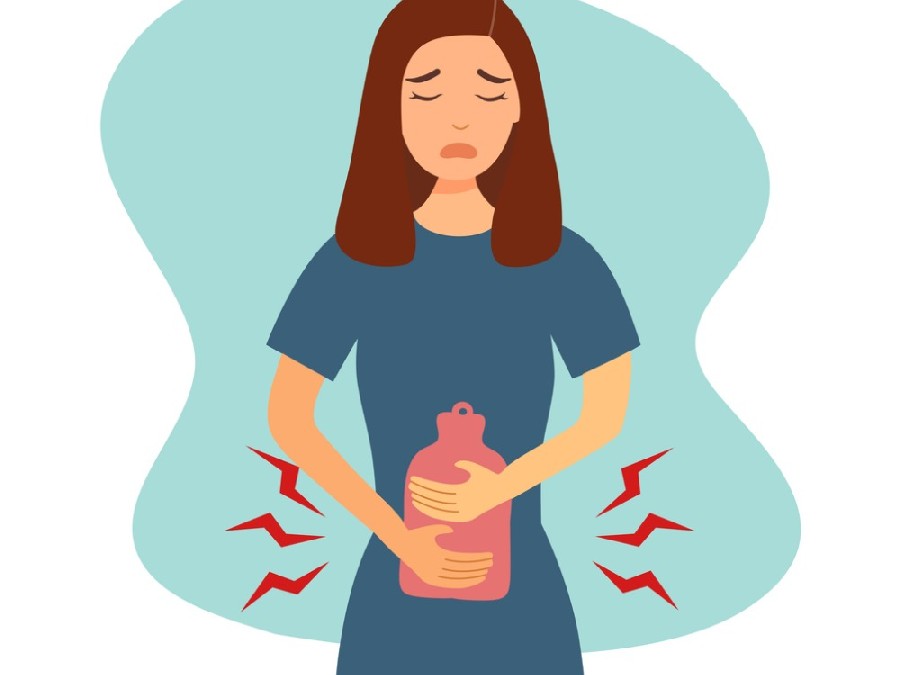
Treatment Options for Premenstrual Syndrome
The treatment approach for PMS is typically multifaceted, combining lifestyle modifications, over-the-counter remedies, and, in some cases, prescription medications. The goal of treatment is to alleviate symptoms and improve quality of life during the premenstrual phase.
Lifestyle Modifications
Many women find relief from PMS symptoms through lifestyle changes:
- Regular exercise: Engaging in moderate physical activity can help reduce bloating, improve mood, and enhance overall well-being
- Stress management: Techniques such as yoga, meditation, or deep breathing exercises can help manage stress and anxiety associated with PMS
- Dietary changes: Reducing salt, caffeine, and alcohol intake while increasing complex carbohydrates and lean proteins can help alleviate symptoms
- Sleep hygiene: Maintaining a consistent sleep schedule and ensuring adequate rest can improve mood and energy levels
- Smoking cessation: Quitting smoking may help reduce the severity of PMS symptoms
Over-the-Counter Remedies
Several non-prescription options can help manage PMS symptoms:

- Pain relievers: Nonsteroidal anti-inflammatory drugs (NSAIDs) like ibuprofen or naproxen can help with cramps, headaches, and breast tenderness
- Diuretics: Over-the-counter diuretics may help reduce bloating and water retention
- Vitamins and supplements: Calcium, magnesium, vitamin B6, and vitamin E supplements have shown some benefit in managing PMS symptoms
Prescription Medications
For women with more severe symptoms, healthcare providers may recommend prescription treatments:
- Hormonal contraceptives: Birth control pills or patches can help regulate hormone levels and reduce PMS symptoms
- Antidepressants: Selective serotonin reuptake inhibitors (SSRIs) may be prescribed to manage mood-related symptoms, especially for women with PMDD
- Anti-anxiety medications: For severe anxiety symptoms, benzodiazepines may be prescribed for short-term use
- Diuretics: Prescription-strength diuretics can be used to manage severe bloating and water retention
Alternative Therapies
Some women find relief through alternative therapies, although scientific evidence for their effectiveness is limited:

- Acupuncture
- Herbal remedies (e.g., chasteberry, evening primrose oil)
- Massage therapy
- Light therapy
It’s important to consult with a healthcare provider before starting any new treatment regimen, especially when considering alternative therapies or supplements.
Living with Premenstrual Syndrome: Coping Strategies and Support
While PMS can be challenging, many women find effective ways to manage their symptoms and maintain a good quality of life. Developing a personalized coping strategy can make a significant difference in dealing with PMS.
Self-Care Techniques
- Prioritize self-care: Engage in activities that promote relaxation and well-being, such as taking warm baths, reading, or practicing mindfulness
- Plan ahead: Be aware of your menstrual cycle and plan important events or tasks during times when symptoms are less likely to interfere
- Stay active: Regular physical activity can help boost mood and energy levels
- Maintain a healthy diet: Focus on nutrient-rich foods and stay hydrated
- Get adequate sleep: Prioritize good sleep habits to help manage fatigue and mood swings
Communication and Support
Open communication with partners, family members, and close friends about PMS can help foster understanding and support. Consider the following:

- Educate loved ones about PMS and how it affects you
- Be honest about your needs during difficult days
- Consider joining a support group or online community for women with PMS
- Don’t hesitate to seek professional help if symptoms significantly impact your life
Workplace Considerations
For women whose PMS symptoms affect their work performance, consider these strategies:
- Communicate with your supervisor or HR department about your condition, if comfortable doing so
- Request flexible working arrangements during difficult days, if possible
- Plan challenging tasks for times when you’re less likely to experience symptoms
- Take short breaks throughout the day to manage stress and discomfort
Ongoing Research and Future Directions in PMS Management
As our understanding of PMS continues to evolve, researchers are exploring new avenues for diagnosis, treatment, and management of the condition. Some areas of current research include:
Biomarker Identification
Scientists are working to identify specific biomarkers that could lead to more accurate diagnosis of PMS and PMDD. This could potentially result in blood tests or other diagnostic tools to confirm the condition and distinguish it from other disorders with similar symptoms.

Genetic Studies
Research into the genetic factors contributing to PMS susceptibility may lead to more personalized treatment approaches. Understanding the genetic underpinnings of the condition could help explain why some women are more severely affected than others.
Novel Treatment Approaches
Ongoing clinical trials are exploring new treatment options for PMS and PMDD, including:
- Targeted hormone therapies
- New formulations of existing medications
- Non-hormonal treatments that address specific symptoms
- Innovative delivery methods for medications
Integrative Medicine Approaches
There is growing interest in studying the effectiveness of integrative medicine approaches for PMS management, including:
- Mindfulness-based interventions
- Nutritional therapies
- Herbal medicine
- Mind-body practices
As research progresses, it’s likely that our approach to managing PMS will become more nuanced and tailored to individual needs. Women experiencing PMS symptoms are encouraged to stay informed about new developments and discuss emerging treatment options with their healthcare providers.

Premenstrual syndrome remains a significant health concern for many women, affecting various aspects of their lives. While the exact causes are still not fully understood, ongoing research and improvements in treatment options offer hope for better management of PMS symptoms. By combining medical interventions with lifestyle modifications and self-care strategies, many women can effectively manage their symptoms and maintain a good quality of life throughout their menstrual cycle.
Premenstrual Syndrome | PMS | PMS Symptoms
On this page
Basics
- Summary
- Start Here
- Treatments and Therapies
Learn More
- Related Issues
See, Play and Learn
- No links available
Research
- Clinical Trials
- Journal Articles
Resources
- Reference Desk
- Find an Expert
For You
- Teenagers
- Patient Handouts
What is premenstrual syndrome (PMS)?
Premenstrual syndrome, or PMS, is a group of physical and emotional symptoms that start one to two weeks before your period. Most women have at least some symptoms of PMS, and the symptoms go away after their periods start. The symptoms may range from mild to severe.
Most women have at least some symptoms of PMS, and the symptoms go away after their periods start. The symptoms may range from mild to severe.
What is premenstrual dysphoric disorder (PMDD)?
Premenstrual dysphoric disorder (PMDD) is a severe type of PMS. With PMDD, the symptoms are severe enough to interfere with your life. PMDD much less common than PMS.
What causes premenstrual syndrome (PMS)?
Researchers don’t know exactly what causes PMS. Changes in hormone levels during the menstrual cycle may play a role. These changing hormone levels may affect some women more than others.
What are the symptoms of premenstrual syndrome (PMS)?
PMS symptoms are different for everyone. You may get physical symptoms, emotional symptoms, or both. Your symptoms may also change throughout your life.
Physical symptoms may include:
- Breast swelling and tenderness
- Acne
- Bloating and weight gain
- Headache
- Joint pain
- Backache
- Constipation or diarrhea
- Food cravings
Emotional symptoms may include:
- Irritability
- Mood swings
- Crying spells
- Depression
- Anxiety
- Sleeping too much or too little
- Trouble with concentration and memory
- Less interest in sex
How is premenstrual syndrome (PMS) diagnosed?
You may wish to see your health care provider if your symptoms bother you or affect your daily life.
There is no single test for PMS. Your provider will talk with you about your symptoms, including when they happen and how much they affect your life. To be diagnosed with PMS, your symptoms must:
- Happen in the five days before your period for at least three menstrual cycles in a row
- End within four days after your period starts
- Keep you from enjoying or doing some of your normal activities
Your provider may wish to do tests to rule out other conditions which may cause similar symptoms.
What are the treatments for premenstrual syndrome (PMS)?
No single PMS treatment works for everyone. If your symptoms are not severe, you may be able to manage them with:
- Over-the-counter pain relievers such as ibuprofen, aspirin, or naproxen, to help ease cramps, headaches, backaches, and breast tenderness
- Getting regular exercise
- Getting enough sleep
- Eating healthy foods
- Avoiding salt, caffeine, sugar, and alcohol in the two weeks before your period
Some studies have shown that certain vitamins may help with some symptoms of PMS. They include calcium and vitamin B6.
They include calcium and vitamin B6.
Some women take certain herbal supplements for PMS symptoms. But there is not enough evidence to prove that supplements are effective for PMS. Check with your provider before taking any vitamins or supplements.
If you are not able to manage your PMS symptoms, your provider may suggest prescription medicines. These medicines may also be used to treat PMDD. They include:
- Hormonal birth control, which may help with the physical symptoms of PMS. But sometimes they may make the emotional symptoms worse. You may need to try several different types of birth control before you find the right one.
- Antidepressants, such as selective serotonin reuptake inhibitors (SSRIs), which may help with emotional symptoms.
- Diuretics (“water pills”) to reduce symptoms of bloating and breast tenderness.
- Anti-anxiety medicine to ease symptoms of anxiety.
Dept. of Health and Human Services Office on Women’s Health
Premenstrual Syndrome (PMS)
(Mayo Foundation for Medical Education and Research)
Premenstrual Syndrome (PMS)
(Department of Health and Human Services, Office on Women’s Health)
Also in Spanish
Premenstrual Syndrome (PMS) FAQ
(American College of Obstetricians and Gynecologists)
Black Cohosh
(National Center for Complementary and Integrative Health)
Chasteberry
(National Center for Complementary and Integrative Health)
Evening Primrose Oil
(National Center for Complementary and Integrative Health)
Mittelschmerz
(Mayo Foundation for Medical Education and Research)
Also in Spanish
Premenstrual Dysphoric Disorder (PMDD)
(American Academy of Family Physicians)
Premenstrual Dysphoric Disorder (PMDD): Different from PMS?
(Mayo Foundation for Medical Education and Research)
Also in Spanish
Water Retention: Relieve This Premenstrual Symptom
(Mayo Foundation for Medical Education and Research)
Also in Spanish
ClinicalTrials.
 gov: Premenstrual Syndrome
gov: Premenstrual Syndrome(National Institutes of Health)
Article: The effect of progressive muscle relaxation technique and myofascial release technique.
 ..
..Article: Effect of curcumin on inflammatory biomarkers and iron profile in patients…
Article: The role of purity and frequency in the classification of perimenstrual.
 ..
..Premenstrual Syndrome — see more articles
Normal Female Reproductive Anatomy
(National Cancer Institute)
Department of Health and Human Services, Office on Women’s Health
Also in Spanish
Find an Ob-Gyn
(American College of Obstetricians and Gynecologists)
Menstrual Period: Premenstrual Syndrome (PMS) and Premenstrual Dysphoric Disorder (PMDD)
(Boston Children’s Hospital)
Also in Spanish
PMS, Cramps, and Irregular Periods
(Nemours Foundation)
Also in Spanish
Premenstrual Syndrome (PMS)
(Department of Health and Human Services, Office on Women’s Health)
PMS (premenstrual syndrome) – NHS
PMS (premenstrual syndrome) is the name for the symptoms women can experience in the weeks before their period. Most women have PMS at some point. You can get help if it affects your daily life.
Most women have PMS at some point. You can get help if it affects your daily life.
Symptoms of PMS
Each woman’s symptoms are different and can vary from month to month.
The most common symptoms of PMS include:
- mood swings
- feeling upset, anxious or irritable
- tiredness or trouble sleeping
- bloating or tummy pain
- breast tenderness
- headaches
- spotty skin
- greasy hair
- changes in appetite and sex drive
Things you can do to help
Do
exercise regularly
eat a healthy, balanced diet – you may find that eating frequent smaller meals (every 2-3 hours) suits you better than eating 3 larger meals a day
get plenty of sleep – 7 to 8 hours is recommended
try reducing your stress by doing yoga or meditation
take painkillers such as ibuprofen or paracetamol to ease the pain
keep a diary of your symptoms for at least 2 to 3 menstrual cycles – you can take this to a GP appointment
Non-urgent advice: See a GP if:
- things you can do to help are not working
- your symptoms are affecting your daily life
A GP can advise you on treatments that can help.
Treating PMS
As well as changes to your lifestyle, a GP can recommend treatments including:
- hormonal medicine – such as the combined contraceptive pill
- cognitive behavioural therapy – a talking therapy
- antidepressants
- dietary supplements
If you still get symptoms after trying these treatments, you may be referred to a specialist.
This could be a gynaecologist, psychiatrist or counsellor.
Complementary therapies and dietary supplements
Complementary therapies and dietary supplements may help with PMS, but the evidence of their effectiveness is limited.
They can include:
- acupuncture
- reflexology
- supplements such as vitamin B6, calcium and vitamin D and magnesium (check with a GP or pharmacist if you are also taking medicines before starting to take regular supplements)
Causes of PMS
It’s not fully understood why women get PMS.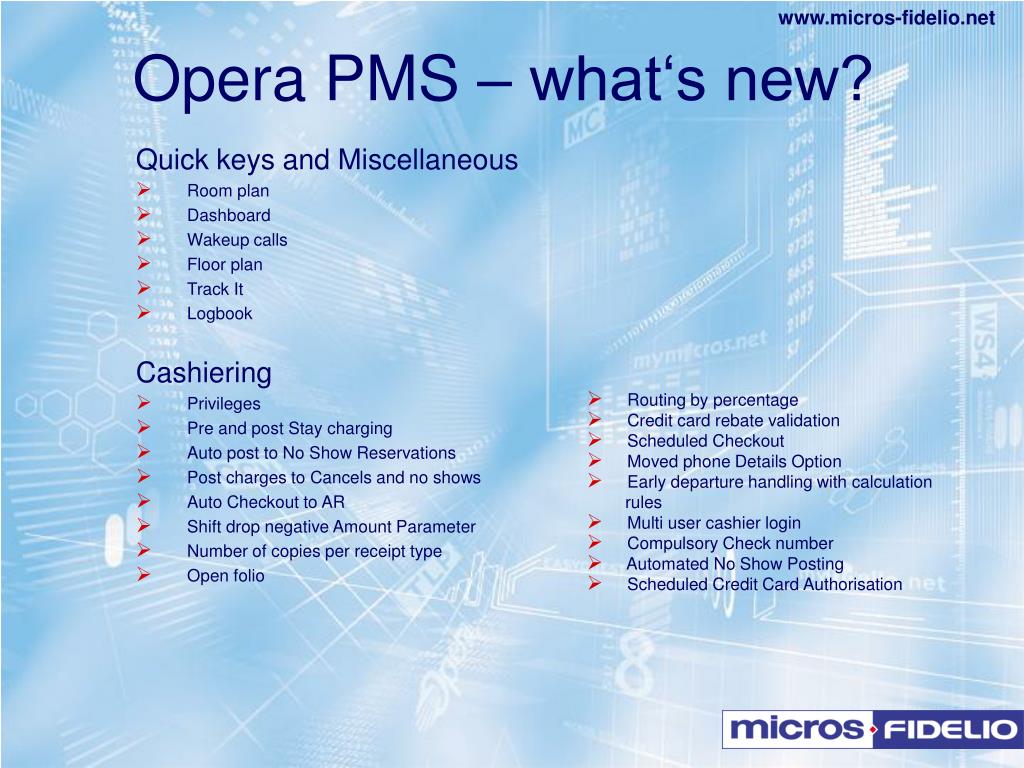
But it may be because of changes in their hormone levels during the menstrual cycle.
Some women may be more affected by these changes than others.
Premenstrual dysphoric disorder (PMDD)
A small number of women may experience more severe symptoms of PMS known as premenstrual dysphoric disorder (PMDD).
Symptoms of PMDD are similar to PMS but are much more intense and can have a much greater negative impact on your daily activities and quality of life.
Symptoms can include:
- physical symptoms such as cramps, headaches and joint and muscle pain
- behavioural symptoms such as binge eating and problems sleeping
- mental and emotional symptoms, such as feeling very anxious, angry, depressed or, in some cases, even suicidal
If you need urgent advice you can:
- call a GP and ask for an emergency appointment
- call 111 out of hours (they will help you find the support and help you need)
- call a helpline, such as the Samaritans (call free on 116 123)
If you feel that you may be about to harm yourself, call 999 for an ambulance or go straight to A&E./can-cervical-mucus-tell-you-if-youre-pregnant-1960286_color1-5b4e3085c9e77c0037c50cc7.png) Or you can ask someone else to call 999 or take you to A&E.
Or you can ask someone else to call 999 or take you to A&E.
Read more about getting urgent help for mental health problems.
The exact causes of PMDD are unknown but it has been linked to sensitivity to changes in hormones or certain genetic variations (differences in genes) you can inherit from your parents.
The Mind website has information about PMDD.
Page last reviewed: 09 June 2021
Next review due: 09 June 2024
Premenstrual syndrome (PMS) – causes, what diseases it occurs in, diagnosis and treatment
- INVITRO
- Library
- Symptoms
- Premenstrual .
 ..
..
Acne (acne)
Diarrhea
Edema
Headache
Panic attack
49664
11 February
Premenstrual syndrome: causes of occurrence, in which diseases it occurs, diagnosis and methods of treatment.
Definition
Tearfulness, irritability, unreasonable anger (according to others), pain in the abdomen and lower back, feeling of melancholy and anxiety, headache, swelling – these and many other symptoms are associated with the development of premenstrual syndrome, or PMS. Is PMS a condition that needs to be treated?
Premenstrual syndrome is a complex of pathological symptoms that includes a variety of psycho-emotional, somatovegetative and metabolic-endocrine manifestations that begin during the luteal phase of the cycle, which lasts approximately 14 days before the onset of menstruation, and disappears in its first days.
Thus, all the symptoms of PMS can appear both immediately after ovulation, and one or two days before the start of the next menstruation.
Varieties of PMS
Depending on what symptoms prevail in the manifestation of premenstrual syndrome, the following forms are distinguished:
- edematous;
- cephalgic;
- crisis;
- neuropsychiatric;
- atypical.
The edematous form of PMS is characterized by swelling of the face, legs, fingers, and associated weight gain. Possible manifestations such as engorgement of the mammary glands, sweating, pruritus and functional bowel disorders (constipation, diarrhea, increased flatulence). All of these symptoms disappear at the onset of menstruation and rarely require medical attention.
The cephalgic form of PMS is characterized by severe headaches, often unilateral, throbbing, aggravated by movement. Such pains are accompanied by irritability, hypersensitivity to smells, aggression, nausea, pain in the heart area.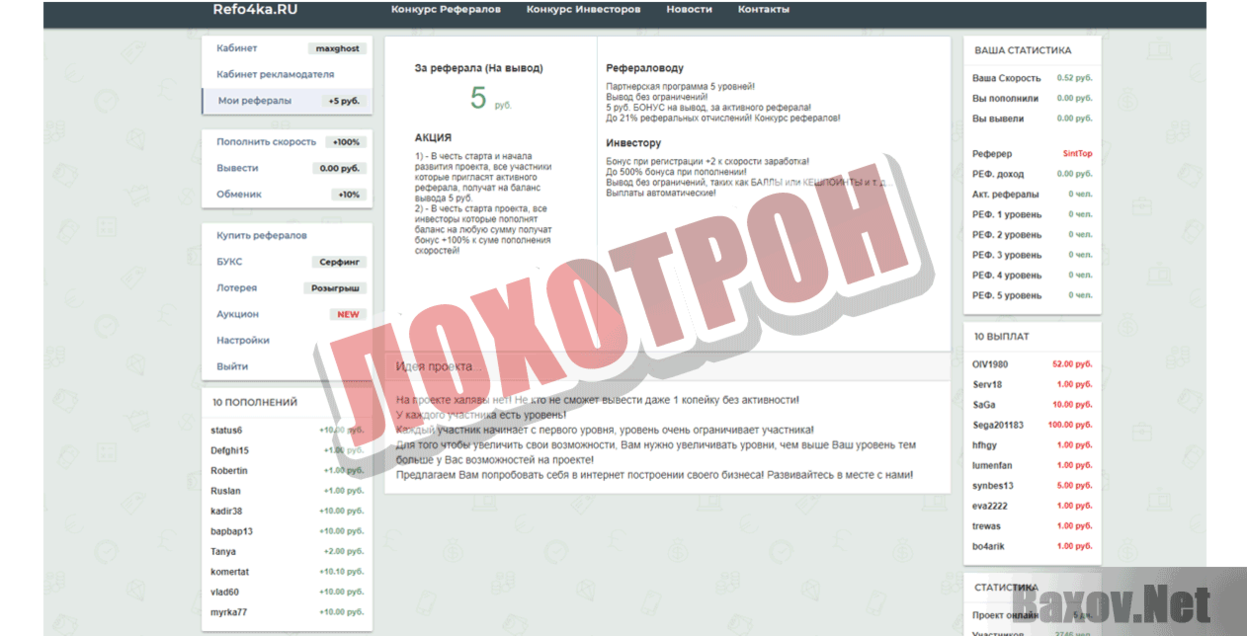 The cephalgic form of PMS occurs in women who have suffered a traumatic brain injury or neuroinfection, as well as those suffering from arterial hypertension and other cardiovascular diseases. The pain disappears at the end of the luteal phase of the menstrual cycle.
The cephalgic form of PMS occurs in women who have suffered a traumatic brain injury or neuroinfection, as well as those suffering from arterial hypertension and other cardiovascular diseases. The pain disappears at the end of the luteal phase of the menstrual cycle.
The crisis form of PMS is characterized by a predominance of sympathoadrenal crises (something similar to panic attacks), accompanied by an increase in blood pressure, increased heart rate, pain in the heart area without changes in the ECG. Such attacks may result in increased urination.
The neuropsychic form of PMS includes a number of symptoms that a woman usually does not pay attention to. They regularly appear before the onset of menstruation and are a reason for consulting a doctor: irritability, tearfulness, insomnia, aggression, depression, fatigue, sexual disturbances, suicidal thoughts and various hallucinations.
The neuropsychic form often co-occurs with other forms, especially in severe cases of PMS.
The atypical form of PMS is rare, passes under the guise of other diseases – bronchial asthma, ulcerative gingivitis or stomatitis, iridocyclitis, myocardiopathy.
According to the severity of the course, a mild form of PMS is distinguished – 2–10 days before menstruation, up to four symptoms appear, while up to two symptoms are expressed to a significant extent.
In severe PMS, more than five symptoms appear 3 to 14 days before the onset of menstruation, and many of them are severe.
Possible causes of premenstrual syndrome
The incidence of PMS depends on the age of the woman. If at the age of 30 years, symptoms of PMS occur only in 20% of women, then after 30 years, PMS occurs in almost every second woman.
Emotionally labile women, asthenic physique, often with a lack of body weight are predisposed to the development of premenstrual syndrome.
Other risk factors for developing PMS include:
- frequent stressful situations at home and at work;
- complicated childbirth;
- history of abortion;
- surgical interventions;
- neuroinfections;
- frequent change of climatic zones;
- the presence of chronic gynecological diseases.

According to modern data, a change in sensitivity to the hormone progesterone is of decisive importance in the development of negative symptoms. The role of the trigger mechanism in the onset of PMS is played by the normal change in the level of sex hormones during the menstrual cycle. In the second half of the cycle (luteal phase), progesterone has the main effect on the woman’s body.
Progesterone indirectly affects the dynamic change in the level of serotonin secretion. It is this system that provides the regulation of mood at the level of neurons.
It is believed that in the luteal phase of the menstrual cycle, there is an increase in the processing time of negative emotions in the structures of the brain and a decrease in control over the level of expression of emotions.
Another mechanism that affects the change in the level of serotonin in the brain is constant stress, prolonged experiences of unresolved conflict situations, fear, expectation of real or imaginary events. Anxiety in most cases increases appetite, and “jamming in a bad mood” leads to the development of flatulence and other dyspeptic disorders (constipation and diarrhea), which contributes to the course of premenstrual syndrome.
Anxiety in most cases increases appetite, and “jamming in a bad mood” leads to the development of flatulence and other dyspeptic disorders (constipation and diarrhea), which contributes to the course of premenstrual syndrome.
Hereditary predisposition plays a huge role in the development of PMS.
Which doctors to contact for PMS
If the manifestations of PMS prevent you from leading a full social and personal life, to solve this problem, you should turn to
gynecologist.
It is important to exclude the presence of other somatic pathology that may worsen the course of the second phase of the menstrual cycle. For this you need to contact
therapist. If necessary, the doctor will refer you to the necessary laboratory and instrumental examinations and consultations of narrow specialists.
If the organic cause of the disease is not found, it is necessary to consult a psychiatrist to determine tactics to overcome anxiety and other stressful conditions.
Diagnostics and examinations for PMS
During the diagnosis of premenstrual syndrome, an important role is played by the patient’s diary for several cycles.
It notes all the symptoms of PMS, their severity in points from 0 to 10.
In the course of exclusion of somatic and neuroendocrine pathology, a complex of laboratory and instrumental diagnostics is performed depending on the symptomatic picture.
- Hormonal blood test: follicle stimulating hormone (FSH), luteinizing hormone (LH), prolactin, testosterone, estradiol, adrenocorticotropic hormone (ACTH), thyroxine (T4), triiodothyronine (T3), thyroid stimulating hormone (TSH).
Follicle Stimulating Hormone (FSH)
Synonyms: Blood test for FSH; Follitropin. Follicle-Stimulating Hormone; follitropin; FSH.
Brief description of the analyte Follicle-stimulating hormone
…
Up to 1 business day
Available with house call
715 RUB
Add to cart
Luteinizing Hormone (LH)
Synonyms: Glycoprotein gonadotropic hormone; luteotropin; Lutropin. luteinizing hormone; LH; Lutropin; Interstitial cell stimulating hormone; ICSH.
luteinizing hormone; LH; Lutropin; Interstitial cell stimulating hormone; ICSH.
Brief description of the determined …
Up to 1 business day
Available with house call
715 RUB
Add to cart
Prolactin (+ additional macroprolactin test if prolactin result is above 700 mU/l)
Synonyms: Prolactin blood test; Lactotropic hormone; lactogenic hormone; Mammotropin; mammotropic hormone. lactotropin; PRL; luteotropic hormone; LTH.
Short description …
Up to 1 business day
Available with house call
715 RUB
Add to cart
Testosterone
Testosterone is the main androgenic hormone. The test is used in the diagnosis of disorders of sexual development and hypogonadism in men; cycle disorders, infertility, virili…
The test is used in the diagnosis of disorders of sexual development and hypogonadism in men; cycle disorders, infertility, virili…
Up to 1 business day
Available with house call
715 RUB
Add to cart
Estradiol (E2, Estradiol)
Synonyms: Blood test for estradiol. 17-beta-estradiol.
Brief description of the analyte Estradiol
Estradiol is a steroid hormone with maximum estrogen…
Up to 1 business day
Available with house call
715 RUB
Add to cart
ACTH (Adrenocorticotropic hormone, corticotropin, Adrenocorticotropic Hormone, ACTH)
Adrenocorticotropic hormone is a pituitary hormone that regulates the production of glucocorticoids in the adrenal cortex.
Synonyms: Blood test for ACTH; Address…
Up to 1 business day
Available with house call
RUB 1,125
Add to cart
Free thyroxine (Free T4, Free Thyroxine, FT4)
Free thyroxine not bound to blood plasma transport proteins.
Synonyms: Blood test for free thyroxine. Free T4; Free Form of Thyroxin.
Short description …
Up to 1 business day
Available with house call
665 RUB
Add to cart
Free triiodothyronine (Free T3, Free Triiodthyronine, FT3)
Synonyms: Free triiodothyronine.
Free T3.
Brief description of the test substance Triiodothyronine free
Free triiodothyronine (T3free) belongs to the thyroid . ..
..
Up to 1 business day
Available with house call
RUB 685
Add to cart
Thyroid Stimulating Hormone (TSH)
A pituitary hormone that regulates thyroid function. One of the most important tests in the laboratory diagnosis of thyroid diseases.
Synonym…
Up to 1 business day
Available with house call
620 RUB
Add to cart
Glucose (in the blood) (Glucose)
Research material
Serum or blood plasma. If it is not possible to centrifuge the sample 30 minutes after collection for serum/plasma separation…
If it is not possible to centrifuge the sample 30 minutes after collection for serum/plasma separation…
Up to 1 business day
Available with house call
335 RUB
Add to cart
Cholesterol total (cholesterol, Cholesterol total)
Synonyms: Cholesterol, cholesterol. Blood cholesterol, Cholesterol, Chol, Cholesterol total.
Brief characteristics of the analyte Total cholesterol
Approximately 80% of total cholesterol is synthetic…
Up to 1 business day
Available with house call
370 RUB
Add to cart
Cholesterol – VLDL (VLDL Cholesterol, VLDL Cholesterol)
Synonyms: Very low density lipoprotein cholesterol;
Very Low Density Lipoprotein; VLDL; Very low density lipoproteins.
Brief characteristics of analyte Cholesterol – LPO…
Up to 1 business day
Available with house call
420 RUB
Add to cart
LDL Cholesterol (Low Density Lipoprotein Cholesterol, LDL, Cholesterol LDL)
Synonyms: LDL; Low density lipoproteins; LDL; LDL cholesterol; Low density lipoprotein cholesterol; Cholesterol beta-lipoproteins; Beta lipoproteins; Beta LP.
…
Up to 1 business day
Available with house call
370 RUB
Add to cart
HDL Cholesterol (HDL Cholesterol)
Synonyms: High density lipoproteins; HDL; HDL; HDL cholesterol; alpha cholesterol; α-cholesterol. High density lipoprotein cholesterol; high density lipoprotein; Alpha-Lipoprotein Cholesterol; α-lipoprotein cholesterol; α-Lp c…
High density lipoprotein cholesterol; high density lipoprotein; Alpha-Lipoprotein Cholesterol; α-lipoprotein cholesterol; α-Lp c…
Up to 1 business day
Available with house call
400 rub
Add to cart
Glycated hemoglobin (HbA1С, Glycated Hemoglobin)
Synonyms: Blood test for glycated hemoglobin. Glycohemoglobin; HbA1c; Hemoglobin A1c; A1c; HgbA1c; Hb1c.
Brief characteristics of the analyte Glycated hemo…
Up to 1 business day
Available with house call
820 RUB
Add to cart
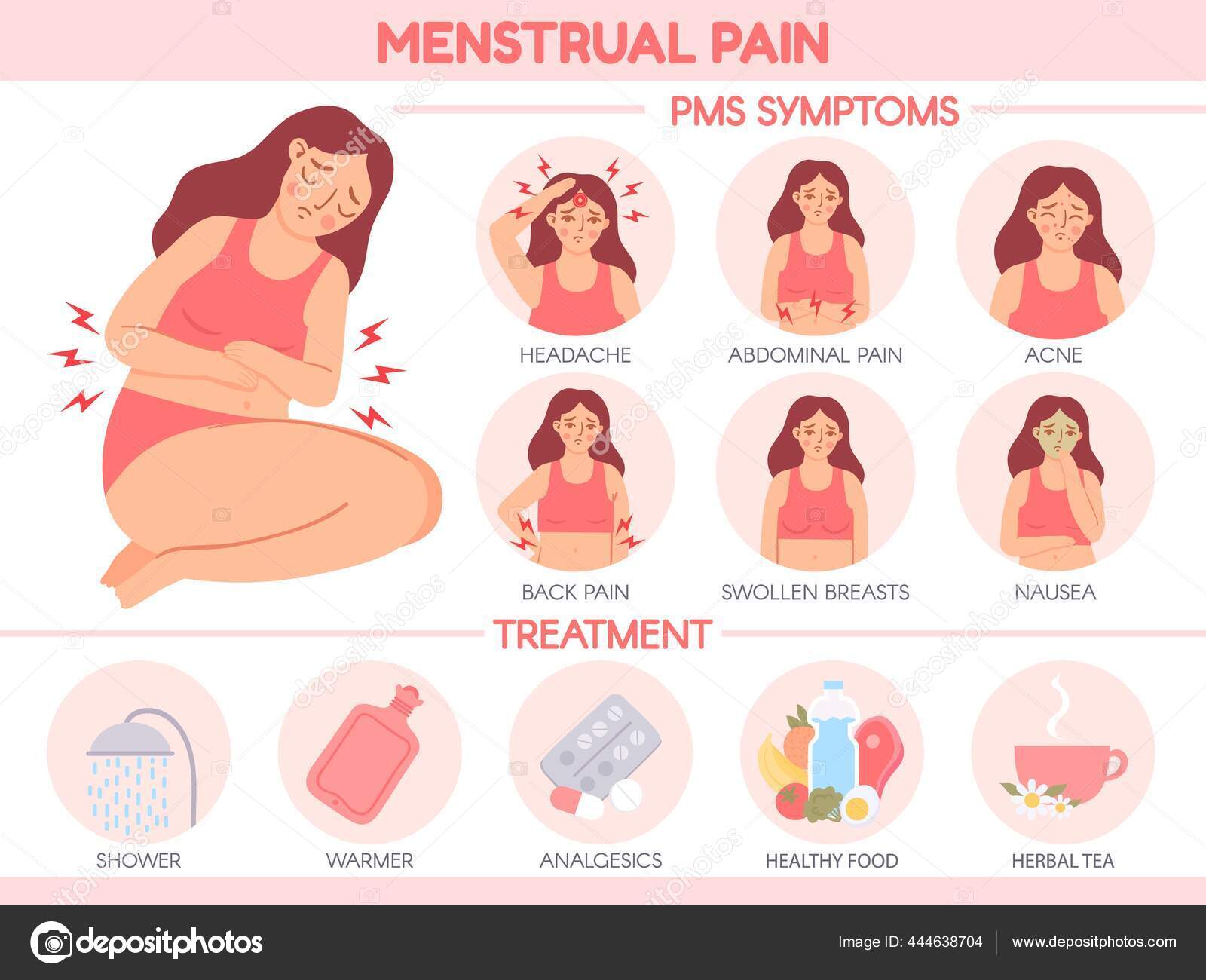
Ultrasound of the mammary glands and regional lymph nodes
Informative study for the diagnosis of neoplasms and determining the involvement of lymph nodes in the pathological process.
RUB 2,490
Sign up
Brain MRI
Safe and informative scanning of brain structures for diagnosing its pathologies.
RUB 5,640
Sign up
MRI of the lumbosacral spine
Diagnostic examination to determine the pathology of the lumbosacral spine and surrounding tissues.
RUB 5,990
Sign up
What to do with PMS
Prevention and reduction of the severity of premenstrual syndrome is based on a change in habitual lifestyle and vitamin therapy.
If possible, it is necessary to exclude stressful situations, sudden changes in climate, the use of combined oral contraceptives.
In addition, caffeine and alcohol should not be abused, it is also advisable to eat small meals throughout the day. To prevent irritability and fatigue, it is recommended to take vitamins B6 and E, magnesium, calcium.
PMS treatment
To reduce the level of anxiety that causes an increase in appetite (“stress eating”), leading, in turn, to dyspepsia, it is recommended to follow a diet aimed at increasing the content of serotonin.
Products with a large amount of tryptophan help in solving this issue: yogurt, cheese, cottage cheese, bananas, mushrooms, dates.
It is also important to observe the rest regime, because a tired person is more sensitive to external stimuli and is capable of inadequate reactions in response to exposure.
Other non-pharmacological methods of treatment include various types of massage, physiotherapy, reflexology and spa treatment.
To relieve stress, aerobic exercise for 20-30 minutes 3 times a week is recommended in the absence of contraindications.
In some difficult cases, and after conducting the necessary studies, the doctor may prescribe hormone therapy with progesterone or estrogen-gestagen preparations. Also, with some forms of PMS, the use of antidepressants and psychotherapy methods is recommended.
Sources:
- Yakovleva E.B., Babenko O.M., Pilipenko O.N. Premenstrual syndrome. Emergency Medicine, journal. No. 3 (58), 2014, pp. 159-163.
- Gulieva L.P., Yureneva S.V. Premenstrual syndrome: clinic, diagnosis and therapeutic approaches.
 Medical Council, journal. No. 2, 2017. P. 106-111.
Medical Council, journal. No. 2, 2017. P. 106-111.
IMPORTANT!
The information in this section should not be used for self-diagnosis or self-treatment. In case of pain or other exacerbation of the disease, only the attending physician should prescribe diagnostic tests. For diagnosis and proper treatment, you should contact your doctor.
For a correct assessment of the results of your analyzes in dynamics, it is preferable to do studies in the same laboratory, since different laboratories can use different research methods and units of measurement to perform the same analyzes.
Recommendations
Shoulder pain
31464
July 23
Dark circles under the eyes
31607
July 17th
Lactose intolerance
31378
the 14 th of July
Show 9 more0013
Diabetes Mellitus
Insulin
Dehydration
Diarrhea
Hyperhidrosis
Aldosterone
Seizures
Cushing’s Syndrome 90 013
Geophagy
Hypokalemia
Hypokalemia: causes, in which diseases it occurs, diagnosis and treatment methods.
More
Diarrhea
Jaundice
Pancreatitis
Acute abdomen
Acute abdomen: causes, diseases, diagnosis and treatment.
More
Diarrhea
Thyrotoxicosis
Elevated hemoglobin
Elevated hemoglobin, or erythrocytosis: causes, in what diseases it occurs, diagnosis and methods of treatment.
More
Iron deficiency
Diarrhea
Thyrotoxicosis
What is hidden behind vascular dystonia?
Vegetovascular dystonia: causes of occurrence, in what diseases it occurs, diagnosis and methods of treatment.
More
Allergy
Bronchial asthma
False croup
Laryngotracheitis
Lung cancer
Angioedema
Pulmonary edema
Epilepsy
Panic attack
Asphyxiation attacks
Asphyxiation attacks: causes, diseases, diagnosis and treatment methods.
More
Nothing found
Try editing your query or select a doctor or service from the list.
Doctor not found
Try changing your query or select
doctor from list
Medical office not found
Try changing your query or select
medical office from the list
Therapist
Traumatologist-orthopedist
Endocrinologist
Urologist
Gynecologist
Ultrasound doctor
Cardiologist
Pediatrician
Nothing found
Please try editing your query
Thank you!
You have successfully made an appointment
Detailed information has been sent to your e-mail
Premenstrual syndrome: neurological aspects | Kurushina O.V., Miroshnikova V.V., Barulin A.E.
Premenstrual syndrome, or PMS. How often do we now hear these words from the TV screen or use them in everyday conversations. Sometimes this is an occasion for jokes and ridicule, sometimes it is a way to caustically prick the interlocutor. We are almost used to such a frivolous attitude, non-medical approach to PMS. In fact, this condition is not always manifested in emotional outbursts, incontinence, and aggressive behavior.
Sometimes this is an occasion for jokes and ridicule, sometimes it is a way to caustically prick the interlocutor. We are almost used to such a frivolous attitude, non-medical approach to PMS. In fact, this condition is not always manifested in emotional outbursts, incontinence, and aggressive behavior.
From the point of view of medicine, PMS is a syndrome complex characterized by a variety of psychoemotional, neurovegetative, metabolic and endocrine symptoms that manifest themselves 2–14 days before menstruation. Complete disappearance of symptoms is observed with the onset of menstruation, and relief persists for at least 7 days, so that there is an asymptomatic week after the end of menstruation. In addition, premenstrual changes must be confirmed for at least two consecutive menstrual cycles [1].
Officially, the “year of birth” of the diagnosis “premenstrual syndrome” is 1931, when R. Frank published an article “The Hormonal Causes of Premenstrual Tension” in the neurological journal. But it would be wrong to assume that this was the discovery of this disease. Even Hippocrates in his writings described the fluctuations in the mood and behavior of women, depending on the lunar cycle. Mention of cyclical symptoms in women is also found in the Ebers Papyrus, the oldest medical document.
But it would be wrong to assume that this was the discovery of this disease. Even Hippocrates in his writings described the fluctuations in the mood and behavior of women, depending on the lunar cycle. Mention of cyclical symptoms in women is also found in the Ebers Papyrus, the oldest medical document.
But scientific research into the nature of these states began only in the 20th century. Russian researchers E.I. Landa (1908) and I.V. Voitsekhovsky (1909) demonstrated rhythmic fluctuations in neuropsychic activity in women depending on the phase of the menstrual cycle. It is their works, describing mood changes, depression, lethargy, depression and irritability that appear before menstruation, that can be attributed to the first descriptions of PMS. Subsequently, several works appeared describing endocrine, sexual, and pain disorders in women during this period [2].
Currently, PMS is a multidisciplinary disease and a place of intersection of interests of doctors of various specialties: gynecologists, endocrinologists, neurologists, cardiologists and many others.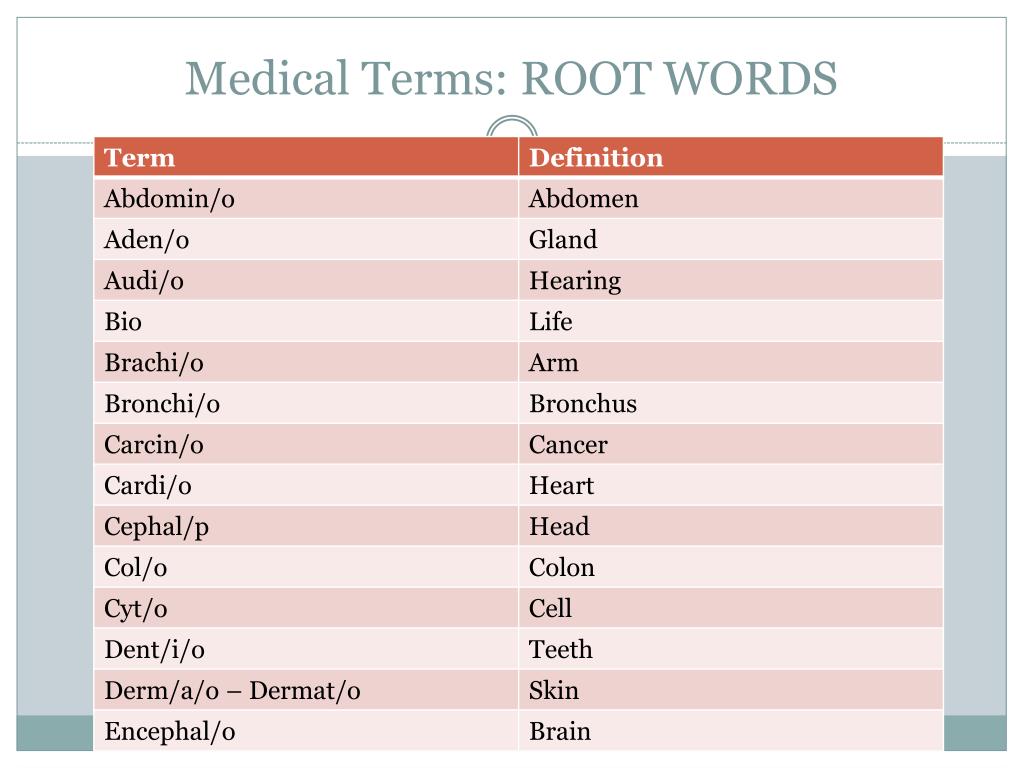
The presence of PMS in women interferes with their professional activities, training, habitual social activity, and disrupts interpersonal relationships. Its feature is clinical polymorphism and a close relationship with vegetative, emotional and motivational disorders. Psychological, social and biological factors play a role in the formation of this syndrome. With the progression of the disease, its transformation into a severe menopausal syndrome is possible, which must be taken into account in the treatment of these patients [3].
The prevalence of PMS, according to domestic and foreign researchers, varies from 18 to 92%. This variability is due to the lack of a unified theory of etiopathogenesis, a clear classification of the clinical picture. In the last decade, interest in PMS has increased significantly in connection with new data on its occurrence in early reproductive age. It has been established that the age of the highest vulnerability ranges between 25 and 35 years, i. e. women of working age suffer, which further emphasizes the medical and social significance of this problem [4].
e. women of working age suffer, which further emphasizes the medical and social significance of this problem [4].
A number of studies have shown that PMS develops more often in women engaged in mental work, in patients with autonomic dystonia syndrome, and is also 4 times more common in women with underweight. This syndrome can occur under the influence of various factors caused by physical or mental overstrain, professional problems, social insecurity, chronic emotional stress. As a result of their own research, the authors demonstrated that the presence in the perinatal period of women’s development of such complications as prolonged labor, intrauterine hypoxia and fetal malnutrition are unfavorable factors for the occurrence of failure of the hypothalamic-pituitary system, subsequently transforming into PMS. In addition, it was found that unfavorable factors are high infectious morbidity at the age of 5 to 7 years, the presence of extragenital diseases in patients (brain injury, ENT diseases, appendectomy at prepubertal age) [2].
Some researchers emphasize that unrealized motherhood can be a provoking factor in the development of PMS.
Pathogenesis
The pathogenesis of PMS is complex and poorly understood, as evidenced by the existence of many theories that claim to explain it.
The first theories of the etiology of PMS were the theories of psychological stress, since the most common symptoms are psycho-emotional disorders. For a long time, PMS was considered the lot of urban women, and especially representatives of intellectual labor, but later this syndrome began to be found in residents of the provinces and third world countries.
With the development of methods for determining hormones in blood plasma, many assumptions have appeared about hormonal imbalance as a leading factor in the etiology of PMS. So, the founder of the hormonal theory R. Frank in 1931 suggested that PMS is caused by an excessive level of estrogen hormones. A number of researchers noted in this disease an increase in the level of 17β-estradiol and a decrease in the level of progesterone in the luteal phase of the cycle.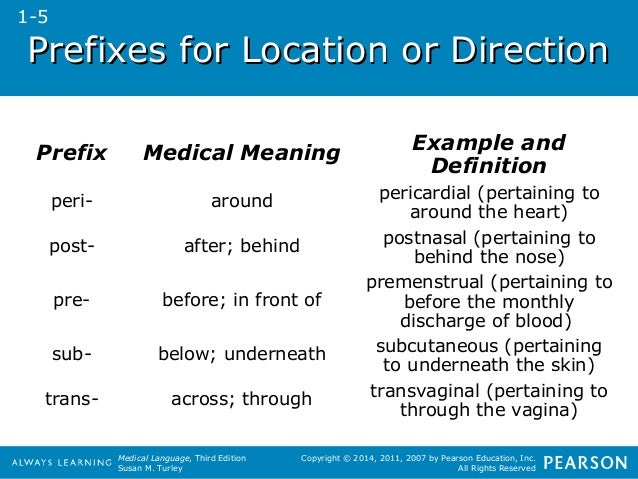 However, along with progesterone deficiency, many authors found normal or even elevated levels of progesterone production in this category of patients [5].
However, along with progesterone deficiency, many authors found normal or even elevated levels of progesterone production in this category of patients [5].
The role of prolactin in the development of this syndrome complex is also ambiguous. For the first time in 1971, Horrobin suggested the possible role of prolactin in the occurrence of PMS. Shortly thereafter, studies appeared showing an increase in prolactin levels in the luteal phase of the menstrual cycle in patients with this pathology. At the same time, an increase in the level of prolactin did not always lead to the development of PMS.
For a long time there was a theory of “water intoxication” of the occurrence of PMS. Disturbances in the renin-angiotensin-aldosterone system were of no small importance in the genesis of fluid retention in PMS [6].
The theory of psychosomatic disorders has many supporters. It is believed that a large role in the pathogenesis of PMS belongs to the girl’s attitude to menarche, fear of the onset of menstruation due to ignorance, the girl’s attitude to her own psychosocial role, as well as the woman’s dissatisfaction with intimate family life. However, other authors believe that somatic factors are of paramount importance, and mental ones follow the biochemical changes resulting from neurohormonal disorders [7].
However, other authors believe that somatic factors are of paramount importance, and mental ones follow the biochemical changes resulting from neurohormonal disorders [7].
With the advent of methods for determining the secretion of prostaglandins, the theory of prostaglandin disorders has become the dominant theory of PMS. Studying the levels of prostaglandins in PMS, Horrobin (1983) concluded that a deficiency of prostaglandin E1 can be clinically manifested by depression, and an excess can lead to affective disorders. The influence of prostaglandin E2 explains migraines, a pronounced neurotic component of PMS in some women, since prostaglandin E2 reduces intracranial and expands extracranial vessels [8].
A number of researchers attach importance to magnesium and vitamin B6 deficiency as a possible causative factor in PMS. Magnesium deficiency can lead to a selective lack of dopamine in the brain, which explains the symptoms of anxiety and irritability. In addition, magnesium deficiency causes hypertrophy of the glomerular zone of the adrenal cortex, which leads to an increase in aldosterone secretion and explains the hyperhydration syndrome [9].
Theories of imbalance of serotonin and γ-aminobutyric acid (GABA) rhythms in the central nervous system and related peripheral neuroendocrine processes have been proposed as universal factors for all types of PMS. In scientific studies of the pathogenesis of PMS, considerable attention is paid to the peptides of the intermedial lobe of the pituitary gland: α-melanostimulating hormone and endogenous opioid peptides – endorphins.
Proponents of the theory of violation of the functional state of the autonomic nervous system (ANS), based on the predominance of the tone of the sympathetic division of the ANS in the 2nd half of the menstrual cycle, believe that the occurrence and development of PMS is a consequence of excessive functional activity of the sympathetic nervous system.
Thus, many theories of the pathogenesis of PMS testify in favor of the fact that provoking factors should be considered not in opposition, but in interrelation and interdependence. The approach to the diagnosis and treatment of this syndrome should be complex.
Clinical picture
Domestic clinicians, depending on the predominance of a certain group of symptoms, conditionally distinguish several clinical forms of PMS: neuropsychic, edematous, cephalgic, and crisis [10].
The clinical picture of the neuropsychic form of PMS is dominated by a variety of psycho-emotional symptoms (irritability, depression, weakness, tearfulness, aggressiveness). If depression prevails in young women with PMS, then aggressiveness is noted in adolescence.
The clinical picture of the edematous form of PMS is dominated by painful engorgement of the mammary glands, swelling of the face, legs, hands, bloating, irritability, sweating, itching of the skin, weight gain in premenstrual days.
The main symptom of the cephalgic form of PMS is a headache of a different nature, a number of women have harbingers of a headache in the form of a feeling of anxiety, fear, irritability and excitability. Headache attacks are often accompanied by vegetative manifestations: nausea, blanching of the skin of the face, increased sensitivity to light stimuli, less often – vomiting.
Among the various forms of headache in PMS, menstrual (catamenial) migraine (MM) is especially distinguished. Due to the lack of a clear definition, the recorded frequency of MM varies from 4 to 73%. According to the definition of the International Headache Society, MM is a migraine without aura if 70% of the attacks occur between 2 days before the onset of menstruation and its last day. The definition of Lignieres Smits (1995) is considered the most accurate: “Attacks of ordinary migraine in the period from two days before the onset of menstruation to its last day, provided that there is no headache on other days of the cycle, attacks are regular, observed for at least 12 cycles” [11].
The clinical picture of the crisis form of PMS is characterized by vegetative paroxysms of a sympathoadrenal nature (“panic attacks”), which occur acutely, without precursors and are characterized by a paroxysmal increase in blood pressure, acute headache, chills, palpitations, a feeling of fear of death and end with a copious separation of light urine [12].
There are atypical forms of PMS: vegetative-dys-ovarian myocardial dystrophy, hyperthermic, hypersomnic forms, cyclic severe allergic reactions up to Quincke’s edema, ulcerative gingivitis and stomatitis, cyclic “bronchial asthma”, indomitable vomiting, etc.
Since pain syndrome of various severity and localization is a frequent leading complaint of patients, it is advisable to isolate the algic form of PMS.
Diagnostics
The diagnosis of PMS is a diagnosis of exclusion, that is, in the process of diagnostic search, the doctor’s task is to exclude somatic and mental diseases that can worsen before menstruation. A carefully collected history of life and anamnesis of the disease, as well as a complete general somatic and gynecological examination are important. Age is not a significant condition, i.e. any woman in the period from menarche to menopause can experience PMS symptoms. We have proposed an algorithm for diagnosing PMS, which focuses on the leading group of complaints and allows you to identify one or another form of this syndrome.
In addition, the leading role is given to self-diagnosis with a diary of complaints for 3 menstrual cycles. Women are asked to rate complaints using a visual analog scale, with a score of 1 to 10 for each symptom. The presence of significant differences between the number and severity of complaints in the 1st and 2nd half of the menstrual cycle suggests a diagnosis of PMS in this patient.
Treatment
Treatment of PMS should be guided by the severity of the symptoms, but most women need to be prescribed medications in combination with non-drug treatments.
There have been many studies on the effectiveness of psychological treatments. These include lifestyle modification (eg, diet modification, relaxation, exercise) as well as specific psychotherapeutic approaches (eg, support groups and cognitive behavioral therapy) [13].
The need to include psychotherapeutic methods is based on the fact that women with PMS can negatively interpret the physiological changes taking place in the body.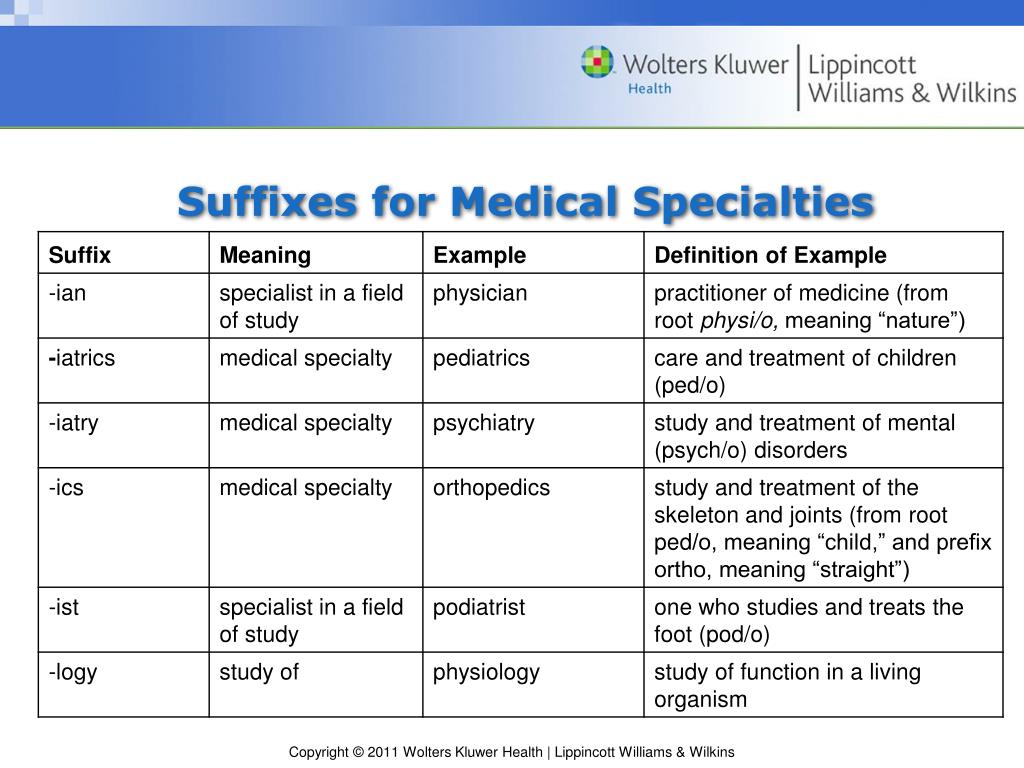 Repeated anticipation of negative experiences can increase feelings of anxiety and depression, especially against the background of existing psychosocial stressors. Expected somatic changes may disrupt normal coping mechanisms that the patient views as uncontrollable and further increase gloomy moods and anxiety, causing a sense of inevitable loss of control. A vicious circle of negative thoughts and self-deprecating behavior supports a maladaptive response to physiological changes. Using the cognitive behavioral therapy model involves trying to find more adaptive ways to cope with premenstrual changes.
Repeated anticipation of negative experiences can increase feelings of anxiety and depression, especially against the background of existing psychosocial stressors. Expected somatic changes may disrupt normal coping mechanisms that the patient views as uncontrollable and further increase gloomy moods and anxiety, causing a sense of inevitable loss of control. A vicious circle of negative thoughts and self-deprecating behavior supports a maladaptive response to physiological changes. Using the cognitive behavioral therapy model involves trying to find more adaptive ways to cope with premenstrual changes.
Relaxation training is a useful addition to the therapeutic package of psychotherapeutic techniques. But there is little research evidence to support its effectiveness on its own. Physical exercises were studied more strictly. Women who exercise regularly are less likely to complain before menstruation. With prospective observation for 6 months. in sedentary women, exercise has been shown to have beneficial effects on mood, fluid retention, and breast tenderness. In a randomized controlled trial of women with confirmed PMS, aerobic exercise was also rated positively, with more intense exercise being more effective.
In a randomized controlled trial of women with confirmed PMS, aerobic exercise was also rated positively, with more intense exercise being more effective.
A modification of the diet is recommended: reducing the consumption of foods containing caffeine, alcohol, salt and refined sugar. Frequent consumption of carbohydrate-rich snacks can increase dietary tryptophan, which in turn increases serotonin synthesis. There is emerging evidence of a beneficial effect of increased premenstrual carbohydrate intake on mood and sex drive [14].
The use of various physiotherapeutic methods has also been studied. Along with procedures that reduce the severity of symptoms, such as massage, balneotherapy, pearl and pine baths, endonasal galvanization, mud applications, it is also possible to use transcranial electrical stimulation of endorphin brain structures (TES). Taking into account the multifaceted effect of the procedure, in particular, a positive effect on the ANS, a significant decrease in the intensity of cephalalgia, and an impact on the emotional sphere, it seems promising to use the TES method to correct algic manifestations and neurovegetative disorders in patients with PMS [15].
Pharmacological correction of PMS can be divided into etiological and symptomatic.
All methods of suppressing the natural cyclicity can be attributed to etiological therapy. This difficult type of therapy is the method of choice in the case of severe PMS, in particular in the crisis form, which causes a long-term loss of the patient’s ability to work and leads to a significant deterioration in her health and quality of life.
Suppression of cyclic hormonal and biochemical processes is achieved by the appointment of hormone therapy (agonists of GnRH, antigonadotropins, combined oral contraceptives, gestagens). But one should take into account the fact that long-term blocking of the natural hormonal cycle may lead to the development of side effects (adrenergic, moderately pronounced androgenic and menopausal symptoms) [16].
A milder option for the etiological drug treatment of PMS is combined oral contraceptives containing highly selective third-generation progestogens. It is possible to prescribe drugs under the supervision of a gynecologist in a continuous mode for 3-4 months. nonstop. However, it must be remembered that this group of drugs is ineffective in case of PMS symptoms in women who took these drugs for contraception [17].
It is possible to prescribe drugs under the supervision of a gynecologist in a continuous mode for 3-4 months. nonstop. However, it must be remembered that this group of drugs is ineffective in case of PMS symptoms in women who took these drugs for contraception [17].
Due to the presence of absolute or relative hyperestrogenism in this condition, therapy with gestagens is indicated, which contribute to the normalization of psycho-emotional disorders and reduce fluid retention in the body and are prescribed after examining the patient’s hormonal background [18].
For pathogenetic therapy of the neuropsychiatric form of the disease (especially moderate and severe), antidepressants are used: selective serotonin reuptake inhibitors and selective serotonin and norepinephrine reuptake inhibitors. The use of tranquilizers may also be useful in the complex treatment of PMS. When choosing a tranquilizer, preference is given to drugs with a vegetative-corrective effect.
Complex therapy regimens traditionally include vitamins A, E, B6 (especially in combination with magnesium).

 ..
.. ..
.. ..
..
 Medical Council, journal. No. 2, 2017. P. 106-111.
Medical Council, journal. No. 2, 2017. P. 106-111.